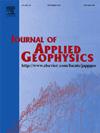3D inversion of airborne transient electromagnetic data using deep learning
IF 2.1
3区 地球科学
Q2 GEOSCIENCES, MULTIDISCIPLINARY
引用次数: 0
Abstract
One-dimensional (1D) airborne transient electromagnetic (ATEM) inversion is still the most popular method applied in field data because the conventional three-dimensional (3D) method requires forward calculations during the inversion process, which is time-consuming, and the inversion results are highly influenced by the initial model. Moreover, the conventional 3D inversion process is unstable and susceptible to converging to local optima. However, the true underground structure is 3D, we need a 3D inversion to study the structure details. We present a novel deep-learning framework, ATEM3D-Net, designed for the 3D inversion of ATEM data. ATEM3D-Net leverages an encoder-decoder architecture that integrates 3D U-Net with ConvLSTM to perform an end-to-end mapping from electromagnetic response data to subsurface resistivity models, where the ConvLSTM can learn the spatiotemporal dependencies of ATEM data to obtain better inversion results. Furthermore, we optimize the network training strategy to make the network converge to the global optimal. We evaluate the performance of ATEM3D-Net using both forward modeling data and field model synthetic data, demonstrating its superior ability to handle noise and its generalization across different geological settings.
利用深度学习对机载瞬变电磁数据进行三维反演
由于传统的三维(3D)方法在反演过程中需要进行正演计算,耗时长,且反演结果受初始模型影响较大,一维机载瞬变电磁(ATEM)反演仍然是野外资料中应用最广泛的方法。此外,传统的三维反演过程不稳定,容易收敛到局部最优。然而,真实的地下结构是三维的,我们需要三维反演来研究结构细节。我们提出了一种新的深度学习框架,ATEM3D-Net,专为ATEM数据的三维反演而设计。ATEM3D-Net利用一种编码器-解码器架构,将3D U-Net与ConvLSTM集成在一起,执行从电磁响应数据到地下电阻率模型的端到端映射,其中ConvLSTM可以学习ATEM数据的时空依赖性,从而获得更好的反演结果。进一步对网络训练策略进行优化,使网络收敛到全局最优。我们使用正演模拟数据和现场模型合成数据评估了ATEM3D-Net的性能,证明了其处理噪声的卓越能力及其在不同地质环境中的泛化能力。
本文章由计算机程序翻译,如有差异,请以英文原文为准。
求助全文
约1分钟内获得全文
求助全文
来源期刊

Journal of Applied Geophysics
地学-地球科学综合
CiteScore
3.60
自引率
10.00%
发文量
274
审稿时长
4 months
期刊介绍:
The Journal of Applied Geophysics with its key objective of responding to pertinent and timely needs, places particular emphasis on methodological developments and innovative applications of geophysical techniques for addressing environmental, engineering, and hydrological problems. Related topical research in exploration geophysics and in soil and rock physics is also covered by the Journal of Applied Geophysics.
 求助内容:
求助内容: 应助结果提醒方式:
应助结果提醒方式:


